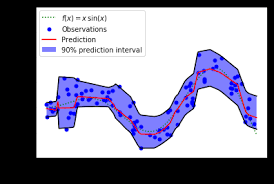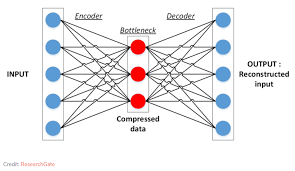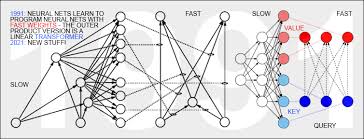Exploring the Power of Quantile Regression Neural Network
Quantile regression neural network (QRNN) is a powerful machine learning technique that combines the flexibility of neural networks with the robustness of quantile regression. This innovative approach allows us to estimate not only the conditional mean of a response variable but also its entire distribution, making it particularly useful in scenarios where traditional regression methods fall short.
Unlike ordinary least squares regression, which focuses on predicting the average value of a dependent variable, quantile regression considers different quantiles of the response variable’s distribution. This is especially beneficial when dealing with skewed or heavy-tailed data, where capturing the full range of possible outcomes is crucial.
The beauty of QRNN lies in its ability to learn complex relationships and patterns in the data while providing a more comprehensive understanding of uncertainty. By estimating multiple quantiles simultaneously, this method can offer valuable insights into both central tendencies and dispersion, making it ideal for risk assessment, prediction intervals, and decision-making under uncertainty.
Furthermore, QRNN leverages the power of neural networks to model nonlinear relationships and interactions between variables effectively. Through multiple layers of interconnected neurons, the model can capture intricate patterns in the data that may be challenging for traditional statistical methods to uncover.
In practice, quantile regression neural network has shown promising results across various fields, including finance, healthcare, and environmental science. Its ability to provide detailed information about different segments of a distribution makes it a valuable tool for forecasting extreme events, analyzing outliers, and understanding complex data structures.
As researchers and practitioners continue to explore the capabilities of QRNN and refine its methodologies, we can expect this innovative approach to play an increasingly important role in predictive modeling and decision support systems. By harnessing the combined strengths of neural networks and quantile regression, we open up new possibilities for tackling challenging problems and gaining deeper insights into complex data landscapes.
Understanding Quantile Regression Neural Networks: Key FAQs and Insights
- What is a quantile regression neural network (QRNN)?
- How does a QRNN differ from traditional regression models?
- What are the advantages of using a QRNN in data analysis?
- Can a QRNN handle non-linear relationships in the data?
- In what fields or industries is QRNN commonly applied?
- How does a QRNN estimate different quantiles of the response variable’s distribution?
- What are some potential challenges or limitations of using QRNN?
- Are there any specific tools or software packages available for implementing QRNN?
What is a quantile regression neural network (QRNN)?
A quantile regression neural network (QRNN) is a sophisticated machine learning technique that combines the principles of quantile regression with the power of neural networks. In essence, a QRNN is designed to estimate not only the conditional mean of a response variable but also various quantiles of its distribution. This innovative approach allows for a more comprehensive understanding of the data, particularly in scenarios where capturing different segments of the response variable’s distribution is crucial. By leveraging neural networks to model complex relationships and interactions within the data, QRNNs offer a flexible and robust framework for analyzing and predicting outcomes across a wide range of applications.
How does a QRNN differ from traditional regression models?
Quantile regression neural network (QRNN) differs from traditional regression models in its approach to estimating the conditional distribution of the response variable. While traditional regression models, such as ordinary least squares, focus on predicting the average value of the dependent variable, QRNN goes a step further by estimating multiple quantiles of the response variable’s distribution. This means that QRNN provides a more comprehensive view of the data, capturing not only central tendencies but also variability and uncertainty. By leveraging neural networks to model complex relationships and interactions in the data, QRNN excels at handling nonlinear patterns and outliers, making it a powerful tool for scenarios where traditional regression methods may struggle to provide accurate and robust predictions.
What are the advantages of using a QRNN in data analysis?
When considering the advantages of using a Quantile Regression Neural Network (QRNN) in data analysis, one key benefit is its ability to provide a more comprehensive understanding of the data distribution by estimating multiple quantiles simultaneously. This feature allows for a nuanced exploration of the variability and uncertainty present in the dataset, making QRNN particularly valuable in scenarios where capturing the full range of potential outcomes is essential. Additionally, QRNN leverages the flexibility and power of neural networks to effectively model complex relationships and nonlinear patterns in the data, enabling researchers to uncover hidden insights and make more informed decisions based on a deeper understanding of the underlying data structure.
Can a QRNN handle non-linear relationships in the data?
When it comes to handling non-linear relationships in the data, a quantile regression neural network (QRNN) excels in capturing complex patterns and interactions that traditional linear models may struggle to represent effectively. By leveraging the flexibility and power of neural networks, QRNN can learn and model intricate non-linear relationships between variables, allowing it to provide accurate estimations of different quantiles of the response variable’s distribution. This capability makes QRNN a valuable tool for analyzing data with non-linear structures, enabling researchers and practitioners to gain deeper insights into the underlying dynamics of their datasets and make more informed decisions based on a comprehensive understanding of the data.
In what fields or industries is QRNN commonly applied?
Quantile regression neural network (QRNN) finds application across a wide range of fields and industries due to its versatility and effectiveness in handling complex data distributions. In finance, QRNN is commonly used for risk assessment, portfolio optimization, and predicting extreme events in stock markets. In healthcare, it can be applied to analyze patient outcomes, predict disease progression, and estimate treatment effects with varying levels of uncertainty. Environmental science benefits from QRNN for modeling climate patterns, predicting natural disasters, and assessing the impact of environmental factors on ecosystems. Additionally, industries such as retail, marketing, and manufacturing leverage QRNN for demand forecasting, anomaly detection, and optimizing supply chain operations. The flexibility and robustness of QRNN make it a valuable tool in diverse domains where understanding the full distribution of outcomes is essential for making informed decisions.
How does a QRNN estimate different quantiles of the response variable’s distribution?
In quantile regression neural network (QRNN), the estimation of different quantiles of the response variable’s distribution is achieved through a unique training process that involves optimizing the neural network to predict multiple quantiles simultaneously. By assigning a separate output node to each desired quantile level, the model learns to capture the varying points across the distribution. During training, QRNN adjusts its parameters to minimize a loss function that penalizes deviations from each specified quantile, effectively learning to predict not only the central tendencies but also the dispersion and shape of the entire distribution. This approach allows QRNN to provide a comprehensive and nuanced understanding of the data, making it a powerful tool for capturing complex relationships and uncertainties in predictive modeling tasks.
What are some potential challenges or limitations of using QRNN?
When considering the implementation of quantile regression neural network (QRNN), it is important to be aware of potential challenges and limitations that may arise. One common challenge is the complexity of interpreting results, as QRNN estimates multiple quantiles simultaneously, making it more challenging to interpret the model’s output compared to traditional regression methods. Additionally, QRNN requires a large amount of data to effectively capture the nuances of the underlying distribution, which can be a limitation in cases where data availability is limited. Furthermore, like other neural network models, QRNN may be prone to overfitting if not properly regularized or validated, leading to reduced generalization performance on unseen data. Addressing these challenges through careful model selection, regularization techniques, and robust validation processes can help mitigate potential limitations and enhance the effectiveness of QRNN in various applications.
Are there any specific tools or software packages available for implementing QRNN?
When it comes to implementing Quantile Regression Neural Network (QRNN), there are several tools and software packages available that can facilitate the process. Popular machine learning libraries like TensorFlow, PyTorch, and Keras offer functionalities for building neural networks, including the capability to incorporate quantile regression layers. Additionally, specialized packages such as Statsmodels in Python provide dedicated modules for quantile regression analysis, which can be adapted for neural network implementations. Researchers and practitioners interested in exploring QRNN can leverage these tools to develop and deploy models efficiently, enabling them to harness the power of this innovative approach in their data analysis and predictive modeling tasks.



